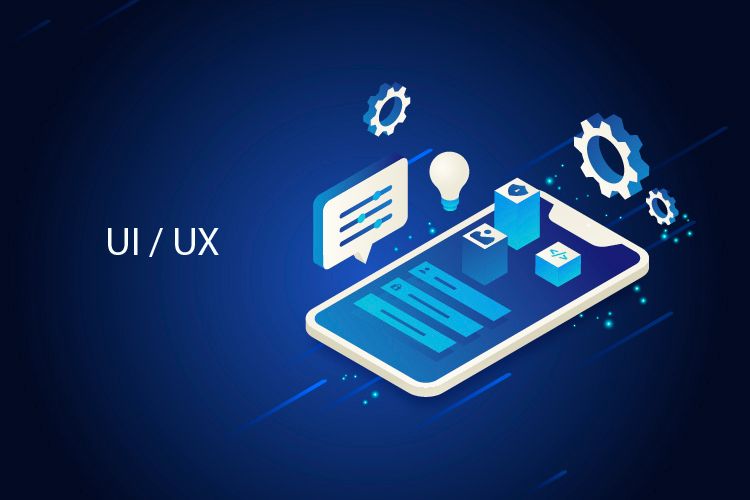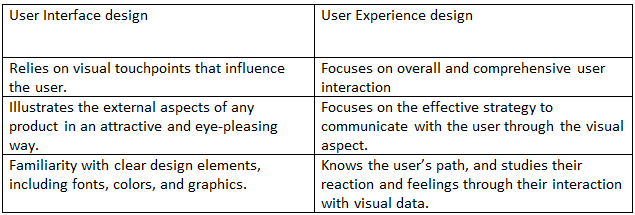custom-software-development-crafting-solutions-for-all-your-business-needs

User interface and user experience design (UI/UX) is one of the most significant areas in design and graphic design, which has been gaining strong prominence recently. Today, UI/UX design is a top priority for companies at many levels, as it ensures professional design and optimal online brand promotion. This focus on the visual appearance of company websites and programs, detailing every aspect to effectively reach the target audience, is crucial. A professional user interface enhances the aesthetic appeal of products and services, making the user experience more intuitive and clear. To understand the key concepts of user interface design and user experience, their functions, and the differences between them, stay tuned for our next article, where we delve into the secrets of design in this field.
User interface and user experience design (UI/UX).
User interface design and user experience (UI/UX) are interrelated concepts. Both, user interface design (UI) and user experience design (UX), are used to build the visual identity of corporate brands and achieve and maximizing their online presence. By creating a harmonious connection between attractive interfaces for websites and digital applications, and achieving interaction from customers. As well as to establish a strong customer base for the company in the future.
What is UI design?
UI design is the touchpoint between the user and the digital products. It includes the design of digital interfaces for websites, applications, and programs, as well as the touch screens in smartphones. The design process is linked to the designer’s creativity, and his ability to understand the customer’s needs, to provide clear and attractive user interfaces in terms of form and use. Also, it is also necessary to have a strong background in understanding the symbols, buttons, icons, colors, images, and other details that contributes to achieving interaction with the digital design of the interface.
UI features
The UI is characterized by the following service features:
- Focuses on attractive design of the digital products, taking into account all interactive visual elements of any interface. Including buttons, icons, spaces, colors, and more.
- Delivering content or branding to individuals or companies through responsive designs to the largest segment of users and ensuring their interaction with it.
- Visually guiding the user through a well-designed visual interface that is aesthetically and practically harmonious.
- Ensuring the success of the user's UX experience through direct interaction with the product interface.
User interface design skills
A UI designer should have the following skills:
- Communication skills
- Creative thinking.
- Time management.
- Solving problems and decision making
- Expertise in choosing colors, fonts, and digital designs
- Mastering prototyping design.
User interface designer tasks
The UI designer has many tasks and responsibilities, whether if they work independently or for a company, and the following are their most prominent tasks:
- Designing icons and buttons.
- Creating highly responsive designs.
- Choosing fonts and colors for digital interfaces.
- Initial conceptualization with initial creation of frameworks and prototypes.
- Communicate with marketing content writers and programmers to get the best user experience.
The best user interface design software
The best user interface design programs are:
- Adobe XD software.
- Marvel.
- Figma.
- UXPin.
What is UX design?
UX design is a design that ensures useful and quickly accessible digital products for users, after understanding their desires, requirements, and any obstacles they may face. This ensures direct and positive interaction with the product, whether it is a website, app, etc.
UX features
User experience achieves many advantages in the world of digital design:
- Knowing customers' needs and problems with the product, whether when opening the website, or downloading a specific program or application.
- Working to provide an enjoyable and useful experience for the customer by creating attractive and intuitive designs.
- Achieving real and direct interaction on available products, and reaching the displayed brands faster.
UX designer tasks
The role of the UX designer is to perform the following tasks:
- Knows and manages user research and choices.
- Collects basic user information.
- Creates structural frameworks and prototyping.
- Conducts usability tests.
- Creates effective communication between customer requirements and employers' goals.
- Collaborates with UI designers, programmers and content writers.
User experience design skills
A UX designer skills are:
- Effective communication.
- Cooperation.
- Research and curiosity.
- Unceasingly acquiring knowledge
- Accept criticism.
- Problem solving skills.
- Familiarity with user experience research and technical analysis.
Difference between UI design and user experience UX
There’s several key differences between UI design and UX design.
The difference between UI design and UX design is several points. User interface design includes the outward appearance of a digital products and the user experience with screens, buttons, and other tangible tools. While user experience design focuses on users' interaction with visual designs and their response time. Accordingly, the differences between the two can be summarized as follows:

How do UI and UX designers work together?
UI and UX designers work independently, but complement each other's work as follows:
- A user experience designer manages user research.
- A user experience designer also creates initial product ideas.
- The user experience designer determines the information required while developing frameworks and prototypes.
- The UX designer also carries out preliminary user research before handing it over to the UI designer.
- Now the user interface designer puts all the visual elements of the product, including fonts, colors, icons, and graphics.
- They also create prototypes to test user interaction with.
Lastly, the UI designer delivers the digital product to developers in order to release it to users.
In conclusion, we have learned about user interface design and user experience (UI/UX). We also reviewed the features of each of the two designs, as well as mentioning the difference between them. Despite the differences in the technical use of each design, the integration between them is the cornerstone of designing and launching any digital product and ensuring that it reaches the target audience successfully.